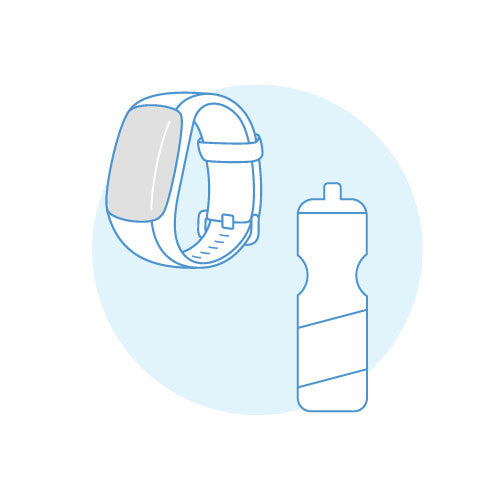Racquet Re Stringing
We offer fast turnaround on racquet re-stringing for Tennis, Squash, Badminton and Racquetball. You will have the peace of mind that your racquet is being professionally strung by a fully qualified ERSA stringer with over 25 year’s experience.
We offer a wide variety of strings and can string to any realistic tension. We currently only offer this service in-store, so if you need a re-string please bring in your racquet and we will aim to have it back in 2-3 working days; however if you need a racquet strung faster than this we can sometimes have them turned around within a day, if you let us know.
If you have your own string and would simply like us to re-string, we are more than happy to help with this.
Why Re-string a Racquet?
The most obvious reason for a racquet re-string is a broken string! However many players believe that this is the only reason for re-stringing a racquet; this is simply not the case. As a general rule of thumb you will need to have your racquet restrung as many times a year as you play a week. Below is a list of reasons why players, seeking an advantage, don’t just re-string their racquets when the strings have broken.
Loss of tension
How to identify:
Either you’ll say to yourself “I’m sure that should have cleared the net!” or “I’m sure my serve used to be more powerful than that!”
Resulting in:
A loss of power and bad shots are accentuated into terrible shots.
Reason:
As strings are used they stretch, or creep as it is also known, this is due to the fact that almost all strings are made from a variety of technical plastics, and by nature plastics can stretch irreversibly. For example; a racquet freshly strung to 24lbs of tension will normally drop to 22 lbs within a day without being used!
Also the repetitive action of the ball or shuttle striking the strings at high speed will cause the strings to elongate and then spring back, but considering the number of times this occurs in an average match the ability for a string to “spring-back” will deteriorate with use to the point where the strings become lax and unresponsive within a few months of regular play.
Poor quality strings
How to identify:
You have just bought a racquet from a giant sporting goods retailer in the belief that you have just bagged a “bargain” and/or your strings are made of a solid white un-textured plastic.
Resulting in:
Poor control and playability as well as poor shock attenuation and power; on the bright side these basic strings are very durable.
Reason:
Your racquet has come pre-strung with a very cheap mono-filament string, a little bit like fitting a nice new car with the cheapest tyres you can buy. Monofilament strings are very cheap and offer no attractive qualities to a player other than the fact that they are very durable, this is normally fine if you are a very occasional recreational player, but if you play with any level of competitiveness or regularity then you will be at a disadvantage.
Worn/abraded strings
How to identify:
Your strings may look a quite fluffy or dirty, coloured strings can start to fade and the strings may start to fray slightly; in some cases you may be able to visibly notice the difference between the thickness of the strings at the centre of the string-bed to the edges.
Resulting in:
A loss of control; as the strings thin they will move across each other more resulting in unpredictable ball/shuttle movement as well as a change in the “feel” of your strokes due to an uneven wearing of the surface texture of the strings.
Reason:
As strings deal with constant friction from repetitive contact with balls or shuttles they can become unevenly abraded (a bit like the heels of your shoes) so they start to thin and their surface properties change.
Need for a change
How to identify:
You are improving considerably and think that you need a new racquet, despite having only bought one recently. Your coach has recommended a specific string or tension set-up for you.
Resulting in:
Blaming your racquet for every bad shot and/or regular frustration!
Reason:
As your game has improved, so have your needs as a player, you can now feel that your racquet isn’t performing and you require more spin or power or control; a new stringing set-up can help you with this.
Tennis: |
||
| String | Guide | Price |
| PRINCE PERFECTION | Multifilament 1.25mm | £42.00 |
| SUPER HYBRID JT OWN | Durable | £36.00 |
| CROSS FIRE 2 | Superior Toughness Maximum Durability | £34.00 |
| PRINCE SYN GUT WITH DURAFLEX | Flexible | £30.00 |
| DUNLOP EXPLOSIVE BITEPOLY | Spin and Comfort Polyester | £34.00 |
| BUFFER SET | Keeps String and Frame Apart | £16.00 |
Squash: |
||
| String | Guide | Price |
| OBLIVIAN | High Power - Low Shock | £40.00 |
| SUPERNICK XL TI | Titanium Coating Extra Durability | £33.00 |
| SUPERNICK XL | The Bench Mark Squash String | £30.00 |
| ULTRANICK | Powerful Lightweight and durable | £39.00 |
Badminton: |
||
| String | Guide | Price |
| ROGUE DUO | Infinite Control - Epic Repulsion | £36.00 |
| ZYMA 66 FIRE POWER | Ultimate Power - Maintains Tension | £30.00 |
| BG80 | Power with Hard Crisp Feel | £28.00 |
| YONEX N99 | Hard Feeling - Repulsion Power | £32.00 |
| YONEX BG65H | Durable | £22.00 |









